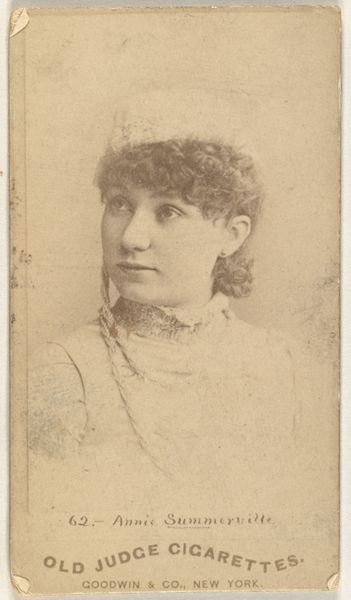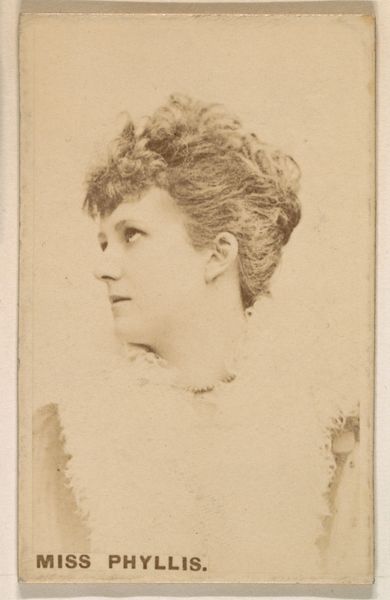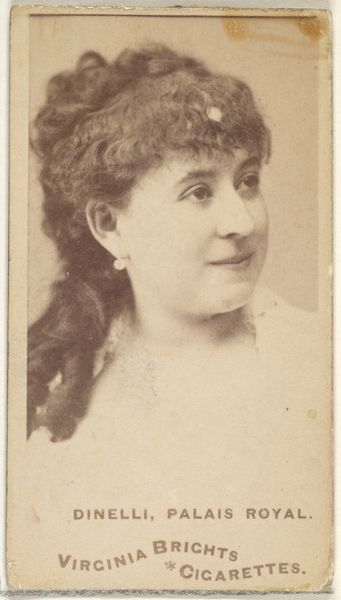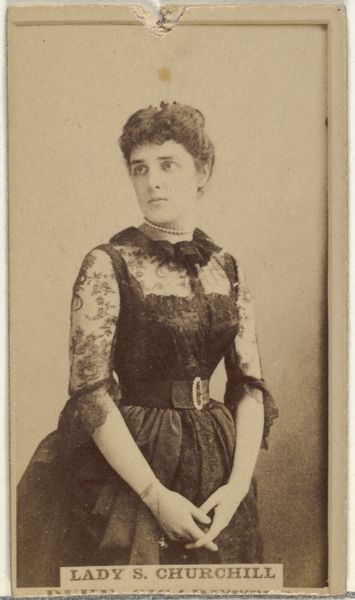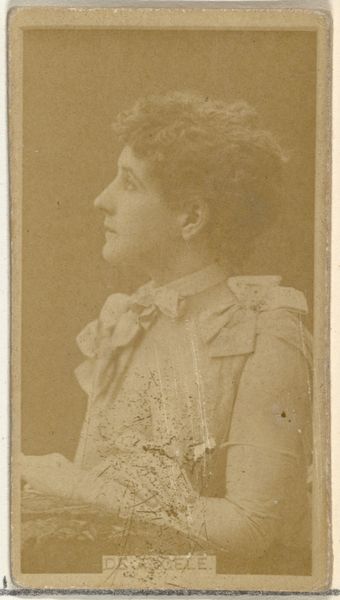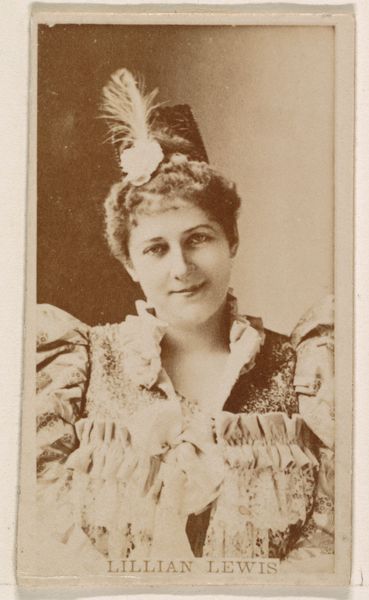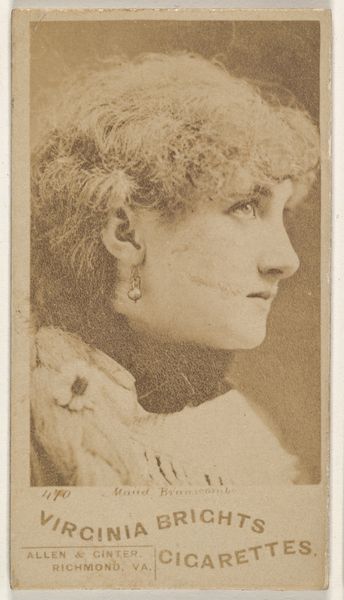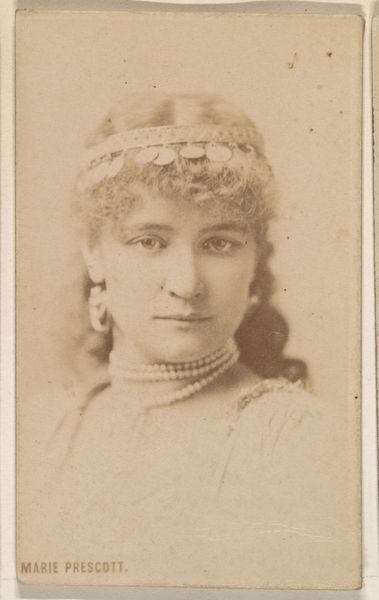
Estelle Rowe, from the Actors and Actresses series (N45, Type 1) for Virginia Brights Cigarettes 1885 - 1891
0:00
0:00
drawing, print, photography
#
portrait
#
drawing
# print
#
photography
Dimensions: Sheet: 2 3/4 x 1 3/8 in. (7 x 3.5 cm)
Copyright: Public Domain
Curator: Here we have a portrait of Estelle Rowe from the "Actors and Actresses" series, created sometime between 1885 and 1891 by Allen & Ginter, originally for Virginia Brights Cigarettes. It's currently housed at the Metropolitan Museum of Art. Editor: It’s… curious. She looks quite composed, almost stoic. The sepia tone lends it a timeless, almost ghostly quality, doesn’t it? And the outfit seems strangely formal, even martial, given the context of its creation. Curator: Exactly! These cards were essentially trading cards inserted into cigarette packs, part of a broader marketing strategy. They reveal a fascinating tension – on one hand, the commodification of celebrity, turning these actresses into collectible objects for mass consumption, and on the other, the careful construction of their image within the rigid social expectations placed on women at the time. Note how her pose is deliberately devoid of overt sensuality, yet her inclusion speaks to evolving cultural fascinations. Editor: It makes you wonder about the labor involved. From the photography and printing, of course, but even back to Estelle Rowe and the cultural labour involved in achieving and maintaining fame. Was this portrait commissioned, or was it taken from existing photographs, repackaged to increase consumption? Curator: Those are excellent questions. We have to remember the social constraints these women faced. Actresses often occupied a precarious position, celebrated yet often marginalized, judged by incredibly stringent moral standards. Did this image help elevate Estelle Rowe's career or further objectify her image? We see those dynamics persisting today in terms of representation and who gets to control it. Editor: Right. These were consumer objects intended to attach cultural prestige to a mass-produced item through association. Looking closely at her clothing and its construction offers more insight, I wonder where her outfit was made. Who designed the costume? Were the cigarettes factory produced, or locally handmade, how might all that interplay of elements be re contextualized to offer deeper meaning? Curator: Precisely. Thinking about all the intersecting components behind its making gives one pause about representation and fame, then and now. Editor: It also adds a needed complexity to the whole narrative and invites deeper understanding.
Comments
No comments
Be the first to comment and join the conversation on the ultimate creative platform.

